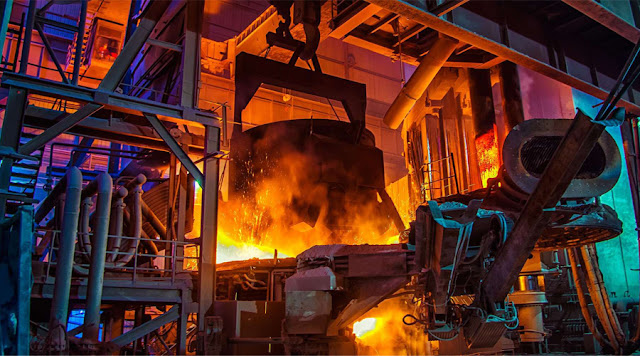Induction Furnaces VS Electric Arc Furnaces The Difference Between Smelting Materials
When it comes to smelting materials, two popular methods are commonly used in industrial settings: induction furnaces vs electric arc furnaces. Both methods have their advantages and disadvantages, and understanding their differences is critical for industries that rely on efficient and cost-effective smelting processes.
Induction furnaces VS Electric Arc Furnaces
Induction furnaces use the principle of electromagnetic induction to heat and melt materials.
The process involves creating an electromagnetic field around a conductor, which induces an electric current, which creates heat within the material. The main advantage of induction furnace is their ability to reach high temperatures quickly, making them ideal for smelting processes that require fast melting and precise temperature control.
Additionally, induction melting furnaces are known for their energy efficiency, as they have high thermal efficiency due to direct heat transfer from electrically charged materials.
An electric arc furnace (EAF), on the other hand, relies on an electric arc created between an electrode and the material to melt the substance.
This method is commonly used in recycling and refining processes because it can smelt a variety of materials, including scrap metal. EAFs are capable of reaching extremely high temperatures, often exceeding 3,000 degrees Celsius. The high temperatures achieved by electric arc furnaces make them suitable for melting materials that require intense heat, such as steel. Additionally, electric stoves are known for their flexibility as they can accommodate different types and sizes of materials.
The difference between IF & EAF melting furnace
One big difference between induction furnace and electric arc furnace is the power source.
IF typically use high-frequency power, which allows for rapid heating and precise temperature control. In contrast, EAF require three-phase power to generate the arc required for the melting process.
Another significant difference between these two methods is the type of materials they can handle. Induction furnaces are commonly used on non-ferrous metals such as aluminum, copper and brass. These materials have lower melting points and can be smelted efficiently using the rapid heating capabilities of induction furnaces. In contrast, electric arc furnaces are better suited for melting ferrous metals such as steel due to their ability to generate extremely high temperatures.
Cost considerations are also important when choosing between induction and electric arc furnaces. Induction furnace are generally more expensive to purchase and operate than electric arc furnaces. However, they offer greater energy efficiency and faster heating times, which can reduce operating costs in the long run. On the other hand, electric arc furnace are generally more cost-effective for industries that require large-scale smelting processes, such as steel production.
In summary, the choice between induction furnaces VS electric arc furnaces depends on a variety of factors, including the type of material being melted, the temperatures required, cost considerations, and operating requirements:
Induction furnaces are ideal for non-ferrous metal smelting, providing rapid heating and precise temperature control.
Electric arc furnaces, on the other hand, excel at smelting ferrous metals, providing high temperatures and flexibility for large-scale operations. Ultimately, industry must carefully evaluate its specific needs and goals to determine the smelting method best suited for its operations.
E-mail: saleswn@hanrm.com / inquiry66@hanmetallurgy.com (Daisy Zhai)
Tel / Whatsapp / Wechat: 0086 17791213533
Xi'an Hani Tech Co., Ltd.



This was an informative comparison. I’ve always been curious about the differences between induction and electric arc furnaces, and your breakdown made things much clearer. The pros and cons you listed gave me a better understanding of which setups might work best for different applications. It also got me thinking about how the type of furnace affects not just performance, but also the entire furnace installation process, especially when it comes to space, power needs, and safety considerations. I appreciate how you kept the explanation easy to follow without getting too technical. Thanks for sharing this valuable insight.
ReplyDelete